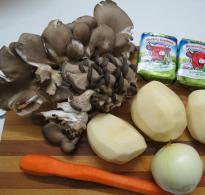That the autumn mushroom is blue-violet. Cobweb purple
Purple cobweb is a beautiful representative of the Spider web family. This is a rare species of mushrooms, listed in the Red Book of Russia.
The Latin name for the fungus is Cortinarius violaceus.
It is also called the violet bog. It is an edible type of mushroom.
Description of the purple cobweb
At a favorable time, the hat of the purple cobweb can grow up to 15 centimeters in diameter. At first, the shape of young cobwebs is hemispherical, but then it straightens and reaches a flat one. A characteristic tubercle is preserved in the center of the cap.
The color of the hats of young specimens is a beautiful dark purple, but gradually it fades, and old specimens already have white caps. The upper surface of the cap is fibrous-scaly. And at the bottom are the plates. The plates are wide, they are rarely located. The color of the plates is purple.
The flesh is thick, at the break it becomes bluish in color. In general, it is very fragile and easily breaks in the hands. The pulp has a slight pleasant aroma.
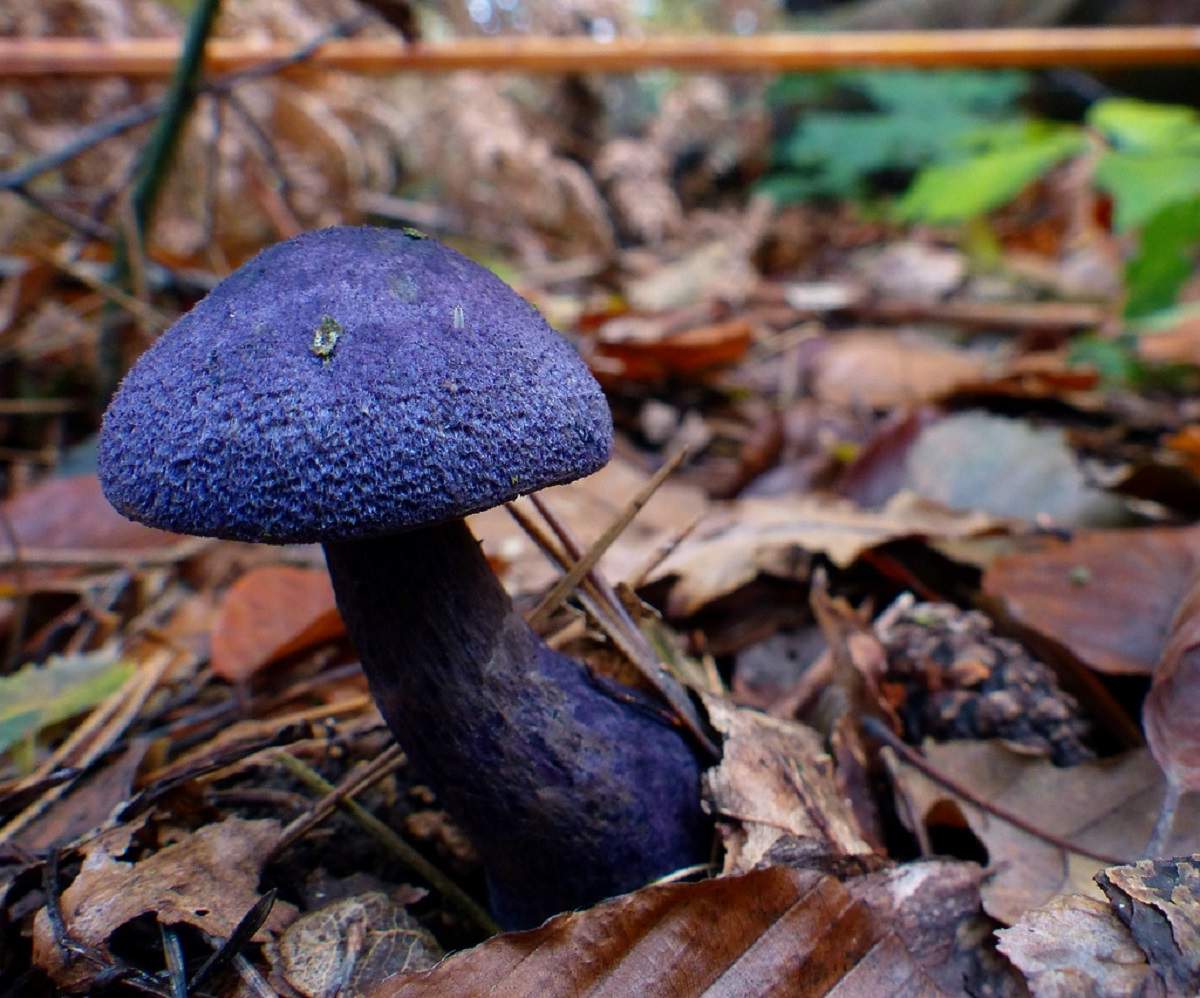
The stem is long, becoming noticeably thicker towards the base. It is dense in structure. Traces of a cobweb cover are visible on the leg. The color of the legs is dark purple.
Violet cobweb habitats
Basically, purple cobwebs settle in damp birch forests. You can find this type of mushroom under spruces and pines. More common are single specimens, more rarely come across a few groups of these cobwebs.
Mushroom pickers can find the first fruiting bodies in August, and fruiting continues until October. It is more likely to meet this purple beauty along forest swamps and lakes. Violet cobwebs do not grow in sunny glades and in mountainous areas. These mushrooms hide in the litter of fallen leaves and moss.

Evaluation of the nutritional value of the purple cobweb
The purple bog is edible and quite delicious mushroom. Mushroom pickers say that this species has medium nutritional qualities. Purple cobwebs are suitable for frying and cooking.
Although the purple cobweb is edible, it is not recommended to collect it, as it is a unique species that is becoming rarer every year. In Russia, collect these edible mushrooms prohibited, so don't do it. Yes, and it is unlikely that it will be possible to collect a basket of purple cobwebs, since they are found in single specimens and not in every season.
Violet venomous twins
In the forest, there are other mushrooms that have a purple color. As a rule, these are non-poisonous mushrooms, but they are inedible. You can recognize the purple cobweb due to the fact that its plates are the same color as the hat.

Related species of purple cobweb
Brilliant cobweb - deadly poisonous mushroom. The cap varies from hemispherical to convex. Its surface is covered with mucus, and the center is fibrous-scaly. The color of the cap is chrome-yellow or sulfur-yellow, there may be reddish-brown spots. The pulp is sulfur-yellow or lemon-yellow. The aroma of the pulp is bready. The leg is bright yellow, with a thickened pubescent base.
Shiny cobwebs grow in mixed and pine forests. They are sold in Europe, and in our country they are known in the Penza region. These mushrooms form mutually beneficial alliances with firs and spruces.
Blue-barreled cobweb is an edible mushroom. At first, his hat is convex, and later almost flat. Its surface is mucous. The color of the cap is dark brown, ocher-brown or yellow-orange, sometimes there may be an olive tint. The leg is cylindrical, also mucous, white or purple. The flesh is whitish, tasteless and odorless. Blue-barrel cobwebs settle in coniferous and deciduous forests.

Cobwebs (Cortinarius) - mushrooms belonging to the cobweb family (Cortinariaceae) and the agaric order. Many varieties are popularly referred to as bog-weeds.
Cobwebs - mushrooms belonging to the cobweb family and agaric order
Mycorrhizal fruiting cap-and-stalked body type with a hemispherical or conical, convex or flat cap, having a pronounced tubercle and a dryish or mucous, smooth or noticeably felty, sometimes scaly surface of yellow or ocher, orange-terracotta, brownish-brick, dark reddish, brown- brick or purple staining.
soft part relatively fleshy or rather thin, white color or ocher-brown, yellow, bluish-violet or olive-green, sometimes changing shade on the cut. All plates are adherent or weakly descending type, thin and relatively often located, of various colors. A cylindrical or club-shaped leg is characterized by the presence of a tuberous thickening at the base. Spores are buffy and brownish.
Features of the triumphant cobweb (video)
Where does the spiderweb mushroom grow
Fruiting bodies of mycorrhizal varieties are able to grow in conifers, as well as not too dense deciduous forests. Varieties are widespread in the temperate climate zone:
- P. excellent found in broad-leaved forests, forming mycorrhiza with beeches, and does not grow in our country;
- P.purple became widespread in the northern regions and middle lane our country;
- P. triumphal mass grows in Eastern Siberia, as well as in the Far East;
- P. grayish blue does not occur on the territory of our country;
- P. blue forms mycorrhiza with beeches and other deciduous trees, grows in Primorsky Krai;
- P. fragrant prefers mixed and coniferous forests for growth and development, where it forms mycorrhiza with beeches and fir.
The most widespread in our country and in many European countries P. is large, growing mainly in mixed forest zones on sandy soils.

Cobwebs are able to grow in conifers, as well as not too dense deciduous forests.
About the edibility of the cobweb
The taste of mushroom pulp of edible varieties, as a rule, is not very pronounced, but most often it is bitter. Mushroom aroma in many species is completely absent., and some fruiting bodies have a fairly noticeable smell of garden radish. Used for food purposes with great care. Most often, fruiting bodies are fried, salted and marinated.
Types of cobweb mushroom
It is not possible to distinguish between edible and poisonous species by taste or smell, so it is very important to know the exact description and external characteristics cobwebs, which are most common in our country.
Gallery: types of cobweb (45 photos)

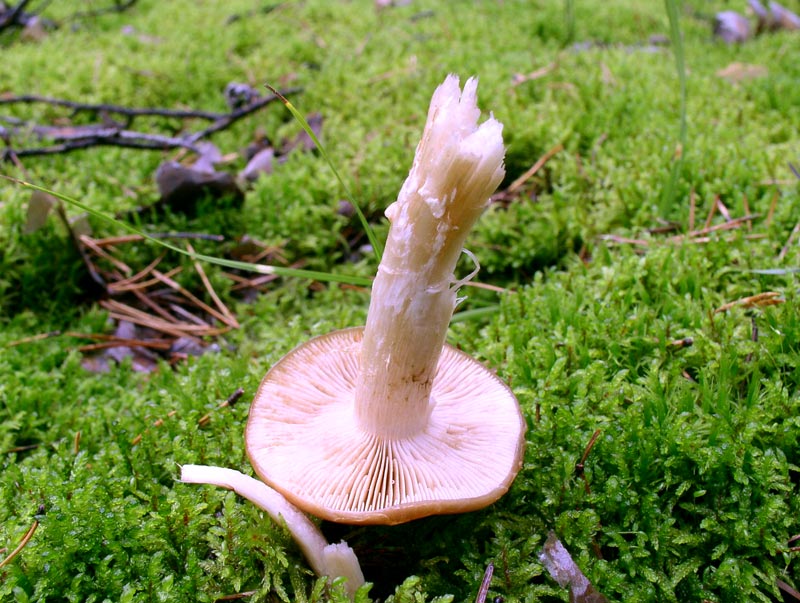
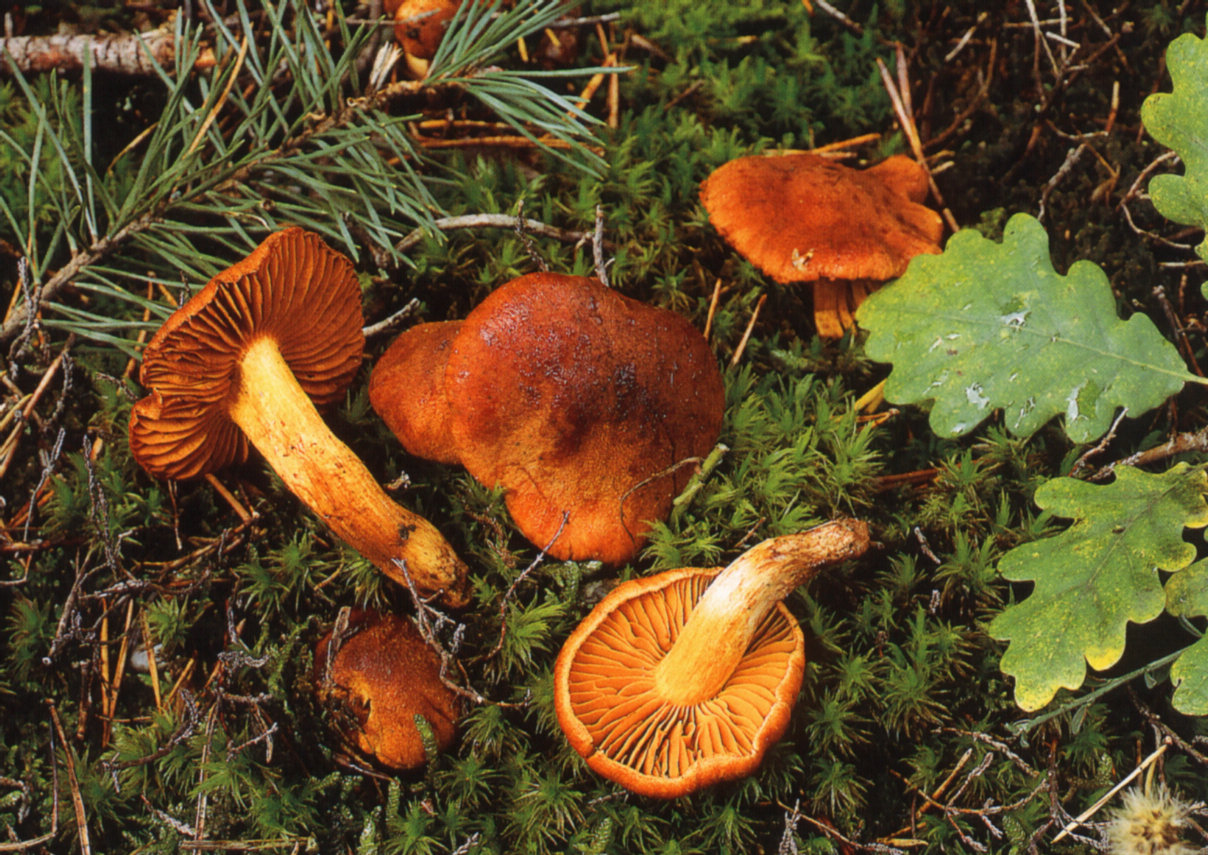
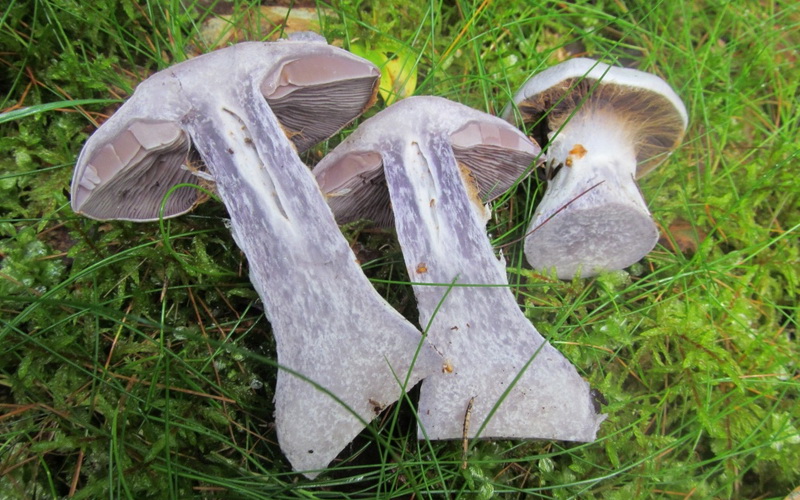
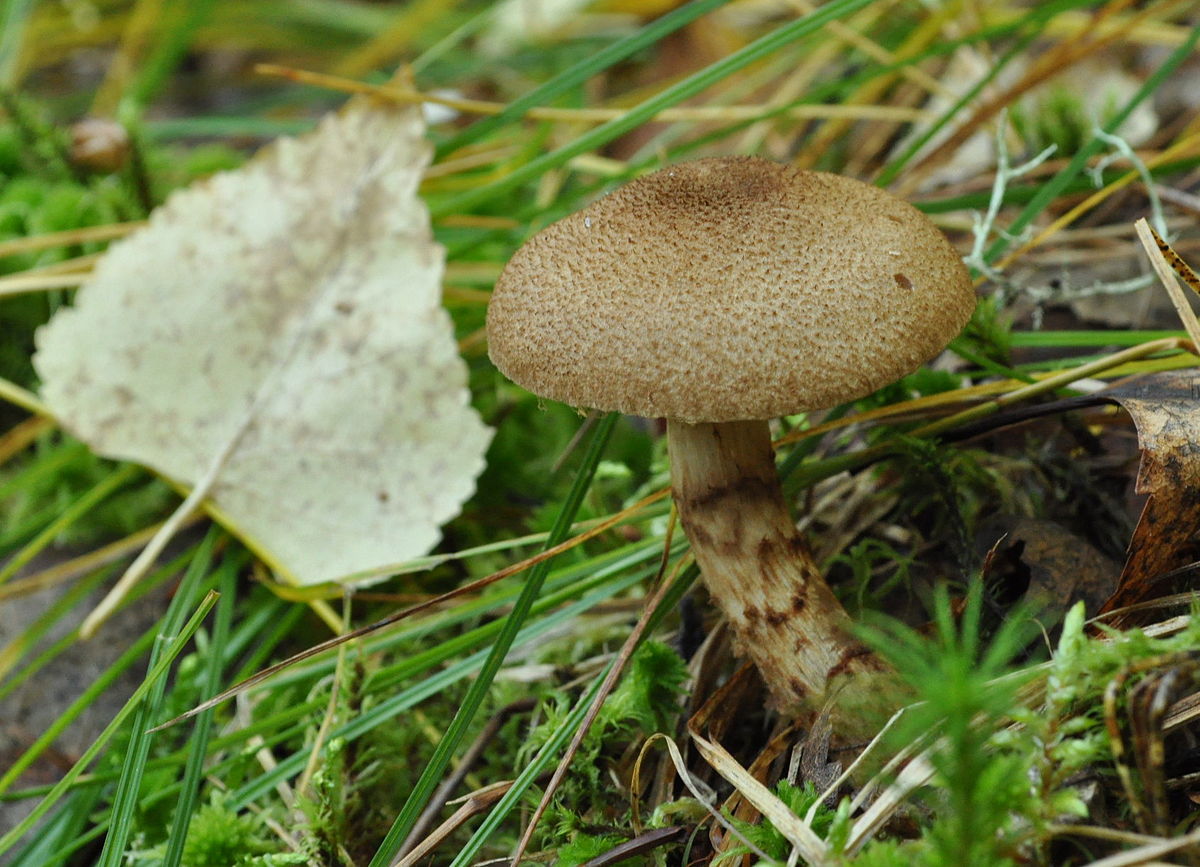



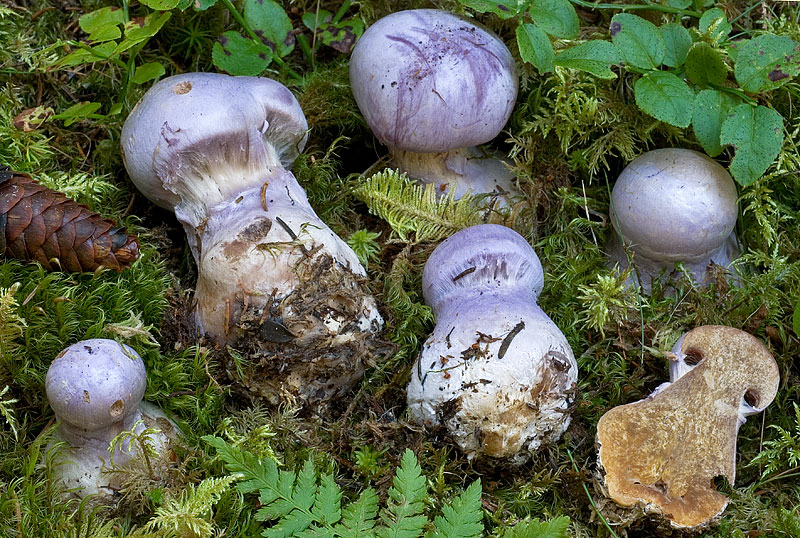

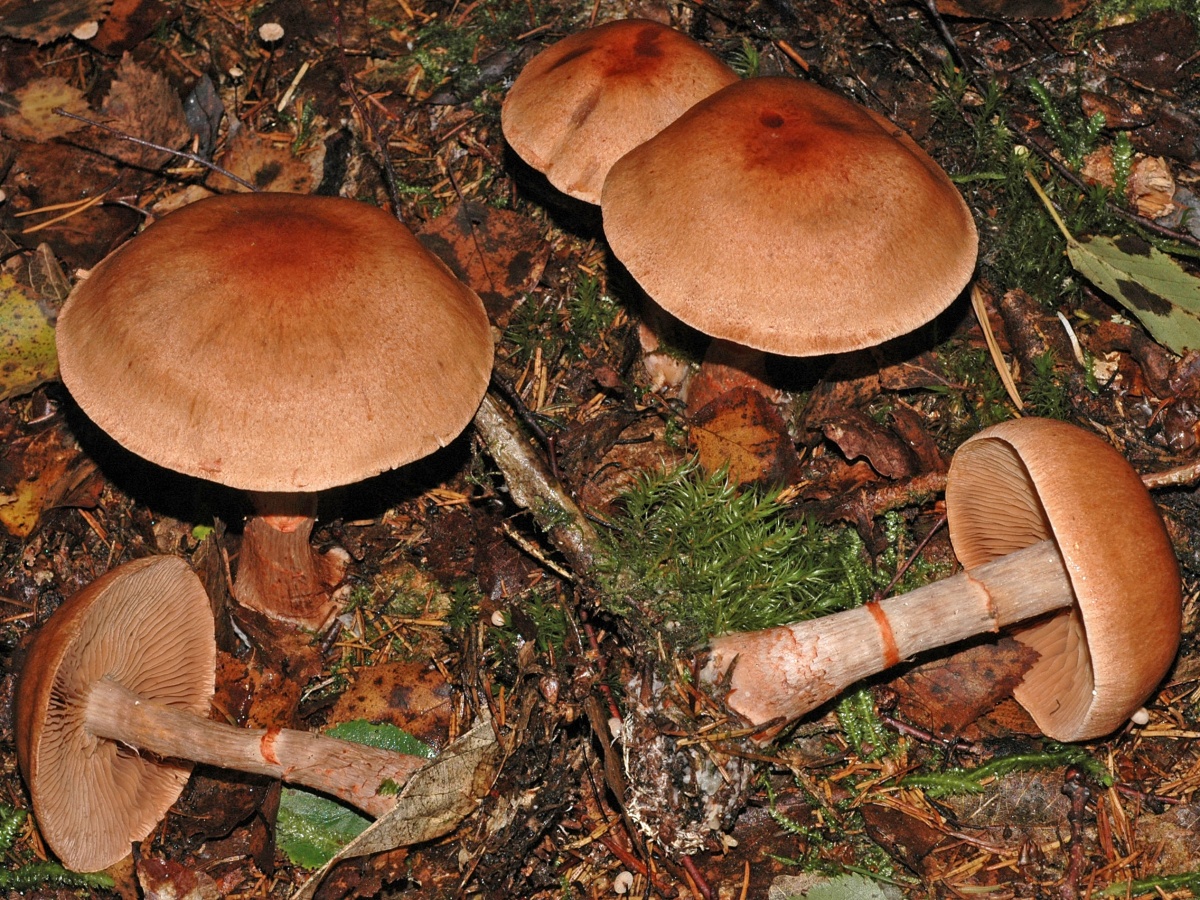

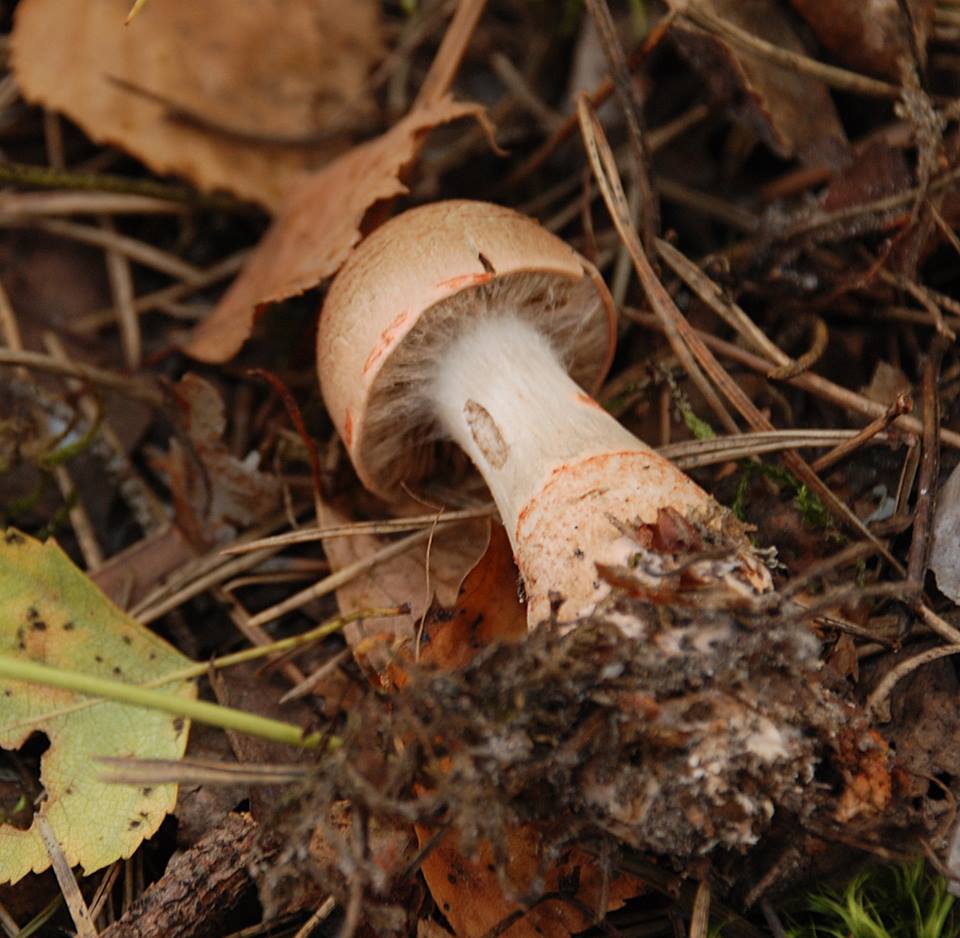








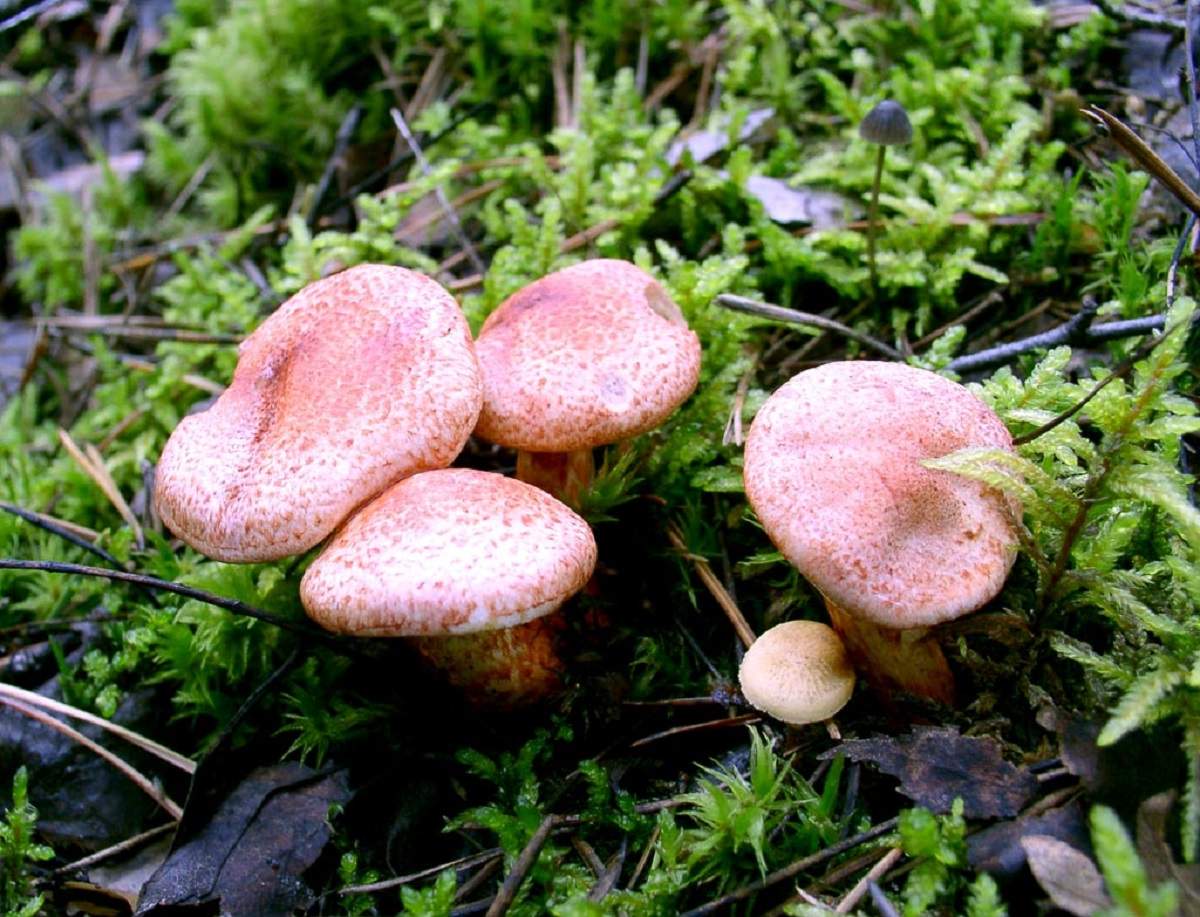
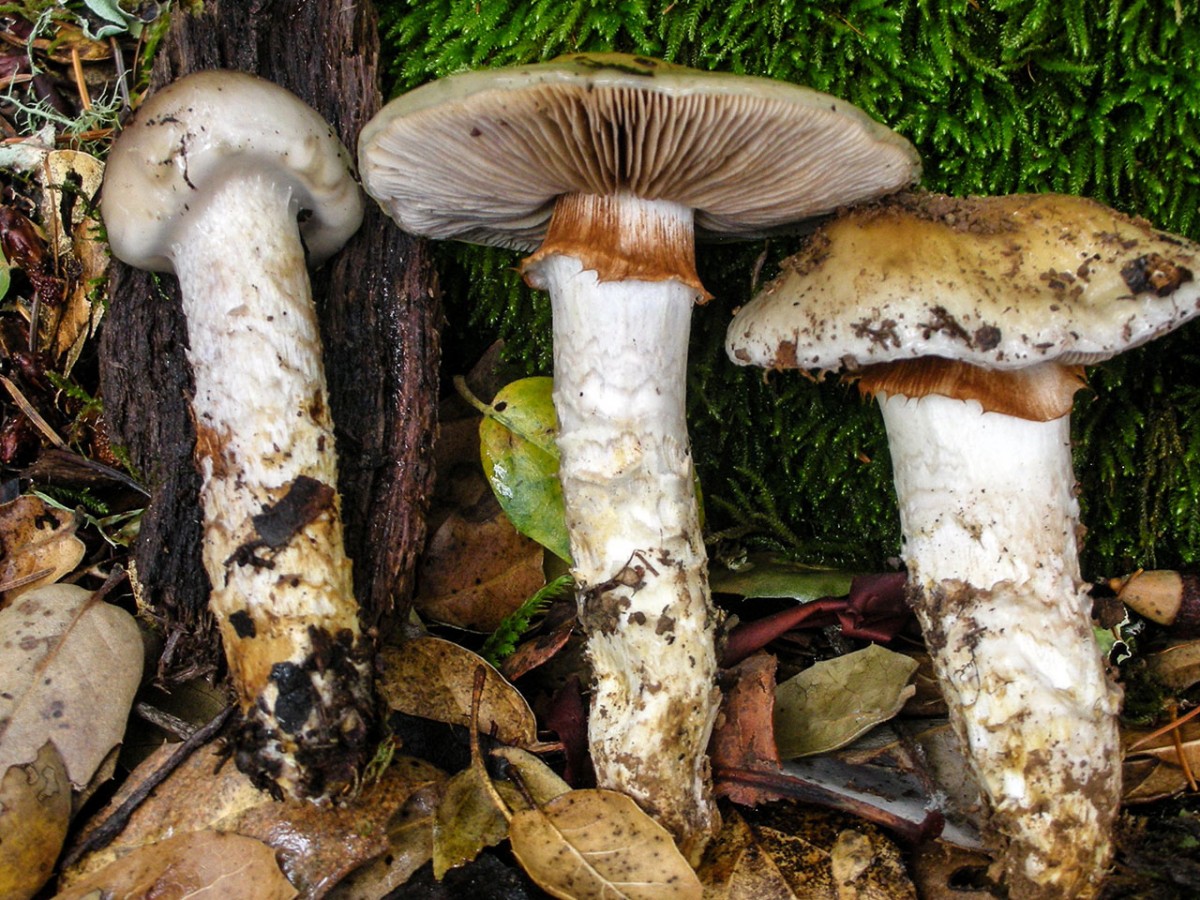


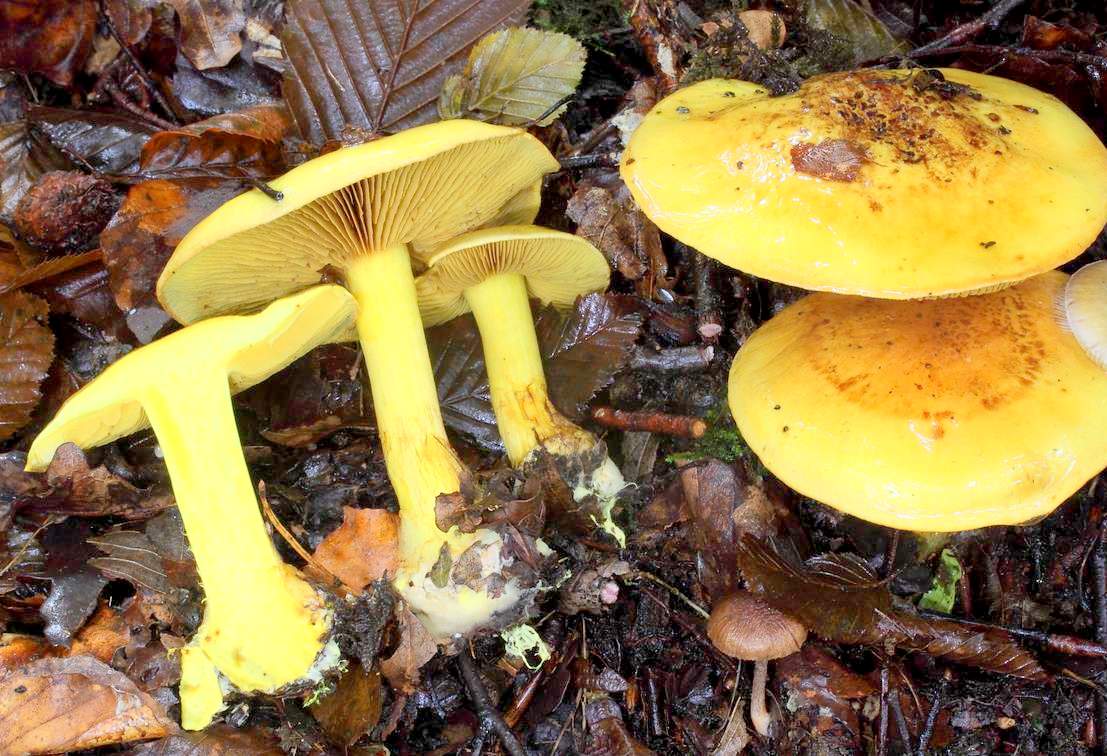


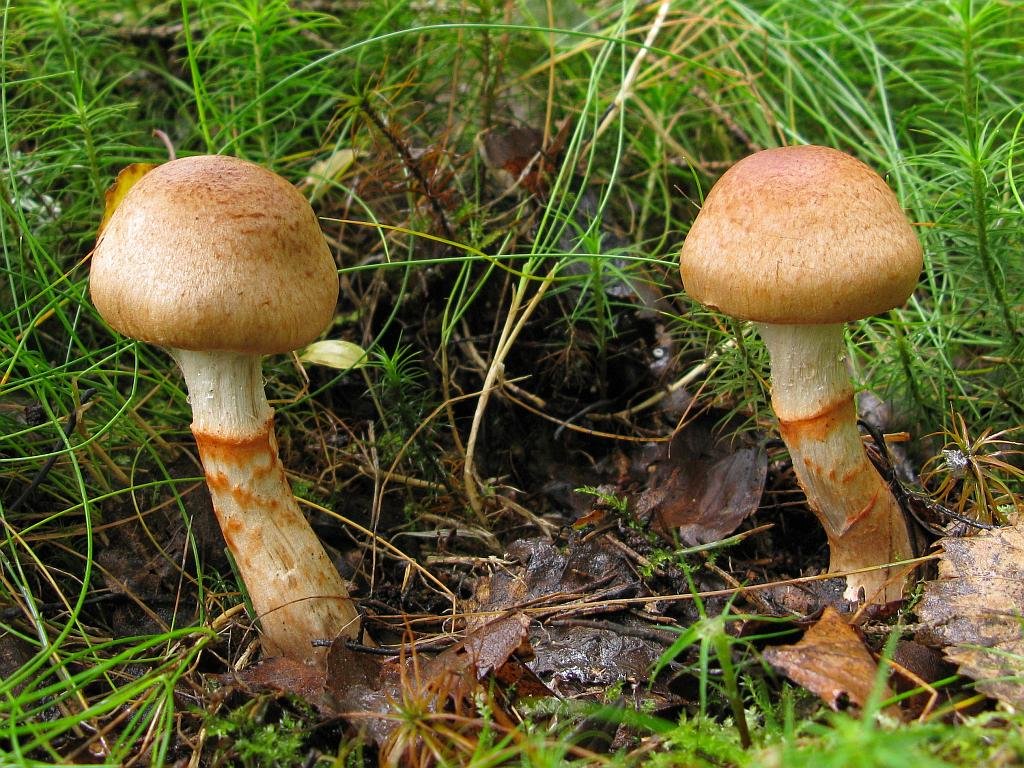
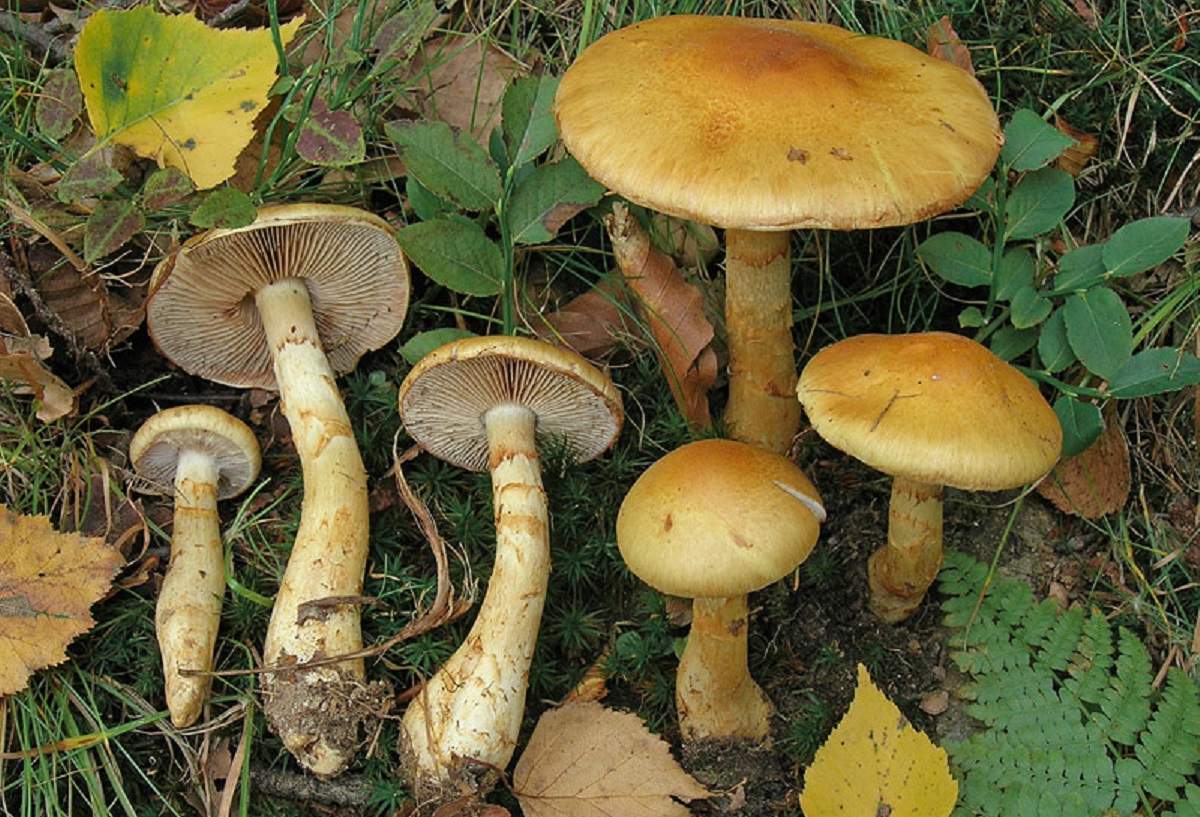




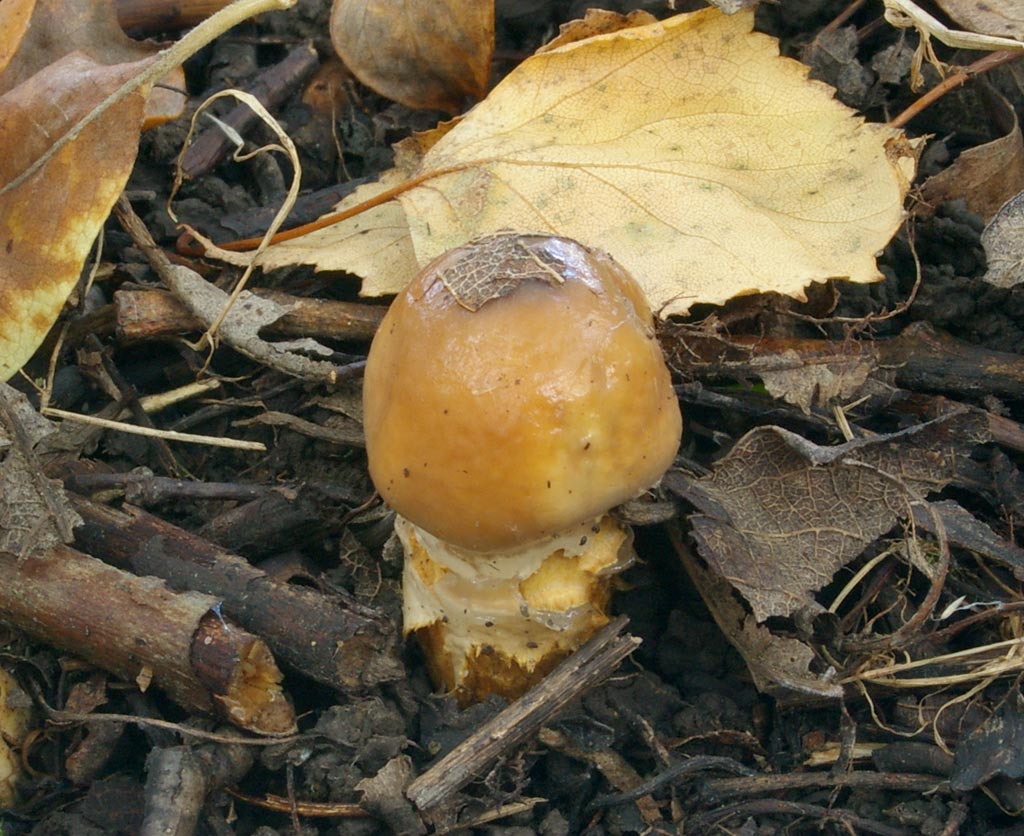



![]()


Сortin.triumphans - has a hemispherical or cushion-shaped, semi-prostrate upper part of an orange-yellow color with the remains of a spathe and a sticky or dry surface covering a thick, soft, whitish-yellowish flesh with a pleasant aroma. The plates are of a weakly adherent type, narrow and frequent, light smoky cream or bluish-brown in color with a rusty-reddish-brown spore powder. The lower part of the fruiting body is strongly thickened, cylindrical in shape.

Сortin.alboviolaseus - has a round-bell-shaped, convex or convex-prostrate hat with an elevation in the central part and a silky-fibrous, shiny, smooth, sticky surface of lilac-violet-silver or white-lilac color. The plates are medium-frequently arranged, narrow, grayish-blue, bluish-ocher or brownish-brown, with the presence of rusty-reddish-brown spore powder. The area of the leg is club-shaped, with a weak mucous membrane. The soft part is thick and watery in places,gray-blue, brown, with an unpleasant odor.

Сortin.armillatus - has a hemispherical, gradually opening, cushion-shaped hat with a wide and blunt tubercle in the central part, covered with dry and fleecy, orange or reddish-brown coloring with remnants of a red-orange-brown veil. The soft part is thick and dense, brownish in color, with a pronounced musty smell in the absence of mushroom flavor. Plates of an adherent type, wide and relatively sparse, grayish-cream, slightly brownish or rusty-brown in color, with brown-rusty-red spore powder. The lower part of the fruiting body is lighter, with an extension at the base, with bracelet-like remains of a bedspread.

Spiderweb is the most special
Сortin.rubellus - has a conical or prostrate-conical hat, with a sharp tubercle in the center and a finely scaly, reddish-orange, reddish-orange or bright brownish surface covering the tasteless and radish-smelling flesh of a reddish-orange-ocher color. Thick and wide plates are rare, adhering to the stem, orange-ocher or rusty-brown in color, with rusty-reddish-brown, spherical spores with roughness. The lower part of the fruiting body is cylindrical in shape, of sufficient density.
Cobweb purple (video)
Cortin.rholideus - has a bell-shaped, slightly convex, with a blunt elevation in the center and numerous scales of dark brown coloring of the cap, covered with a pale brown, brownish-brown skin. Differs in rare, grayish-brownish plates with a lilac-violet tint and the presence of brown spore powder. The lower part of the fruiting body is cylindrical or slightly club-shaped, with an extension at the base, solid or hollow, with a smooth, grayish-brownish scaly surface. Loose type, gray-violet-brown the pulp has a slight musty smell.

Сortin.gentilis - differs in hygrophan, conical, bell-shaped, convex, with an elevation in the center, silky-fibrous or velvety-felt cap of yellowish-reddish-brown or reddish-brown, ocher-orange or yellowish-ocher color with the presence of pressed scales. Plates of an adherent type, descending, rarely located wide and thick, light yellow-ocher or dark brown. The lower part of the fruit bodies without thickening at the base, hollow, covered with a whitish coating, fibrous type, reddish-buffy color.
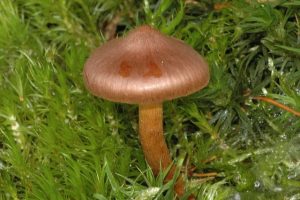
Cobweb anomalous
Sortin.anomalus - characterized by a bulge or flat, with a dry silky or smooth surface, a greyish-brown, bluish-violet, reddish-brown or brown cap. The region of the stem is cylindrical, with a thickening towards the base, whitish, with a light fibrous private spathe. The soft part is whitish, with a purple hue, odorless, with a mild taste.
Poisonous cobweb lazy (video)
Culinary processing of the cobweb
IN culinary purposes edible and conditionally edible representatives are used, including the water blue, superlative, orange, crimson, bangled, purple, blueleg, superlative, and yellow varieties. Used in boiled and fried, salted and pickled, as well as canned, which allows the fruiting bodies to fully reveal their taste and give ready meals subtle and delicate nutty aftertaste.
And some secrets...
Have you ever experienced unbearable joint pain? And you know firsthand what it is:
- inability to move easily and comfortably;
- discomfort when going up and down stairs;
- unpleasant crunch, clicking not of their own free will;
- pain during or after exercise;
- inflammation in the joints and swelling;
- causeless and sometimes unbearable aching pain in the joints ...
Now answer the question: does it suit you? Can such pain be endured? And how much money have you already "leaked" for ineffective treatment? That's right - it's time to end this! Do you agree? That is why we decided to publish an exclusive interview with Professor Dikul, in which he revealed the secrets of getting rid of joint pain, arthritis and arthrosis.
Purple cobweb (Latin name - Cortinarius Violaceus) is an edible mushroom of extraordinary beauty. Very often it can be found in deciduous and coniferous forests. This plant is listed in the Red Book of the Russian Federation, as it is a very rare species of mushrooms.
Cobweb belongs to the genus Lepista, to the Buttercup family. The following characteristic will present all the features of this plant.
Edibility: conditionally edible.
Description
Purple cobweb, or sometimes it is called purple bog, is an adornment of any forest. Despite the fact that it is conditionally edible, it is not recommended to collect it due to its uniqueness. Behind mushroom season it can only be found once. Every year its number decreases.
The mushroom cap can reach 15 cm in diameter. It can be hemispherical or flat. There is a bump in the center. At young mushroom The hat is dyed purple. In rare cases, its color may be red. It may fade over time. In the lower part there are wide plates.
The flesh at the break has a blue tint, and the smell of the mushroom is almost not felt. The flesh is quite fragile, it is easy to break it in the hands.
The stem of the mushroom is long and pleasant to the touch. The same can be said about armor. A thickening can be seen towards the base. In the process of maturation, the stem may become tubular. The outer layer of the mushroom has a purple color.
Where do they grow?
Very often, purple cobweb can be found in raw birch forests. It can spawn under spruces and pines. Single specimens are the most popular, but groups of cobwebs are rare.
Types of cobweb
There are many varieties of cobwebs. The following are the most common of them:
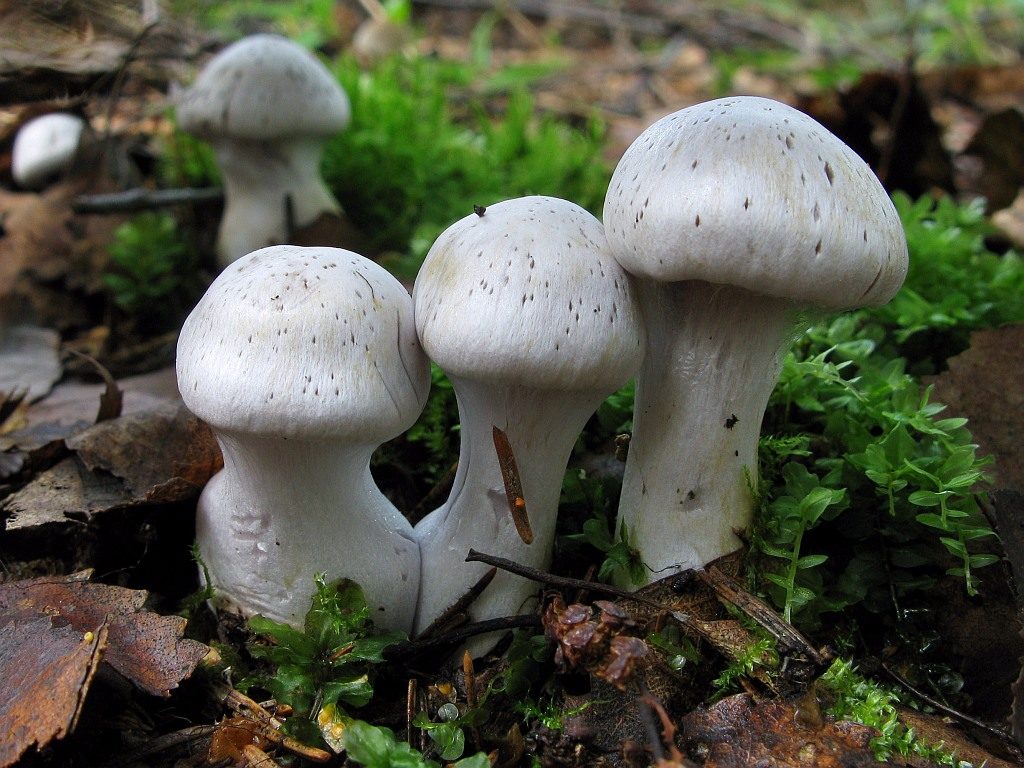
White-purple cobweb. This hat mushroom belongs to the lamellar group. Its cap can reach 12 cm in diameter, and its edges are connected to the leg with the help of a cobweb cover. The pulp of the fungus can be brown or light brown. She has pleasant taste and smell.
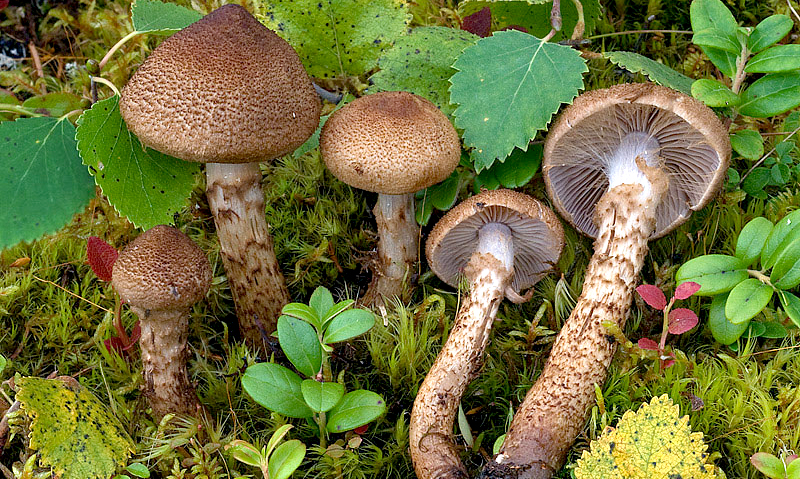
Cobweb Scaly. Its cap can be about 10 cm in diameter, it is convex or flat. In wet weather, it is slimy and shiny.

The cobweb is yellow. The most common representative of the cobwebs, sometimes it is called the yellow or triumphant bog.
Beneficial features
Spider web contains many vitamins in its composition. It consists of B1 and B2, zinc, copper, manganese. This mushroom is characterized by stearic acid and ergosterol.
The medicinal properties of this plant are noted by many pharmacists. Such conditionally edible mushroom used in the manufacture of anti-fungal agents, antibiotics. It can lower glucose levels. It can also be used to create drugs that control hypoglycemia.
Cobweb has an anti-inflammatory property, it perfectly supports the activity of the immune system. at the expense a large number vitamins, it helps to normalize the digestive tract, it also protects the body from infections and prevents overwork, fatigue.
Contraindications
Considering how much benefit this mushroom carries, you can understand that the contraindications here are insignificant. Some edible mushrooms can be confused with inedible ones. The threat is posed by cobwebs that were collected near the road. They managed to absorb all the toxic substances. Such mushrooms are contraindicated for people with gastrointestinal diseases.
How to make a pickle from a purple cobweb?
To pickle such a mushroom, it must be thoroughly washed and cleaned of contaminated areas. Then they are boiled in salted water. The water must be drained and then you can proceed to salting the mushrooms.
Marinate them with vinegar sunflower oil, salt and pepper. Mushrooms need to be immersed in a saucepan, add the listed ingredients and put on a small fire. Spider web mushrooms will secrete a liquid in which salting will occur. Then they can be decomposed into jars and stored for no more than 12 months in a cool place.





